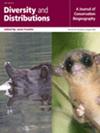Global Coastal Biogeographic Boundaries: Unveiling the Nature of Processes Shaping the Distribution of Marine Biodiversity
Abstract
Aim
Identify biogeographic boundaries that delineate the distribution of species assemblages along global non-insular coastlines, characterise the potential barriers responsible for biogeographic boundaries and realign coastal biogeographic provinces.
Location
Global.
Time Period
Not applied.
Major Taxa Studied
Animalia.
Methods
Global databases of marine animals were used to define biogeographic boundaries as regions that concentrate species range limits. To mitigate sampling bias inherent in uneven presence records in biodiversity databases, we applied a resampling methodology. We used the identified dispersal barriers to divide the study area into ecoregions in order to realign coastal biogeographic provinces. These ecoregions were then clustered into biogeographic provinces based on the similarity of their biodiversity.
Results
We identified 24 biogeographic boundaries along the coastlines of the Americas and 27 along Afro-Eurasia. The 52 ecoregions delimited by the biogeographic boundaries were classified into 23 biogeographic provinces. In most cases, the proportion of exclusive species within each province was higher than 25%. When comparing the proportion of exclusive species to the previous classifications of biogeographic provinces, a higher proportion was found. Of the 21 boundaries of the new biogeographic provinces, nine are aligned with and six are close to previous boundaries between the biogeographic provinces or realms defined in previous studies. Our analysis revealed the presence of 6 additional subdivisions and significant realignments within the marine biogeographic provinces.
Main Conclusions
The objective data-driven approach was effective to identify biogeographic boundaries and realign biogeographic provinces. Most boundaries were associated with strong thermohaline gradients, which typically occur along water-mass fronts due to converging currents, upwelling or river discharge. Such processes, in conjunction with geomorphology and circulation patterns, interact to restrict the dispersal of marine organisms by restricting movement and filtering species according to their ecological niches.


 求助内容:
求助内容: 应助结果提醒方式:
应助结果提醒方式:


